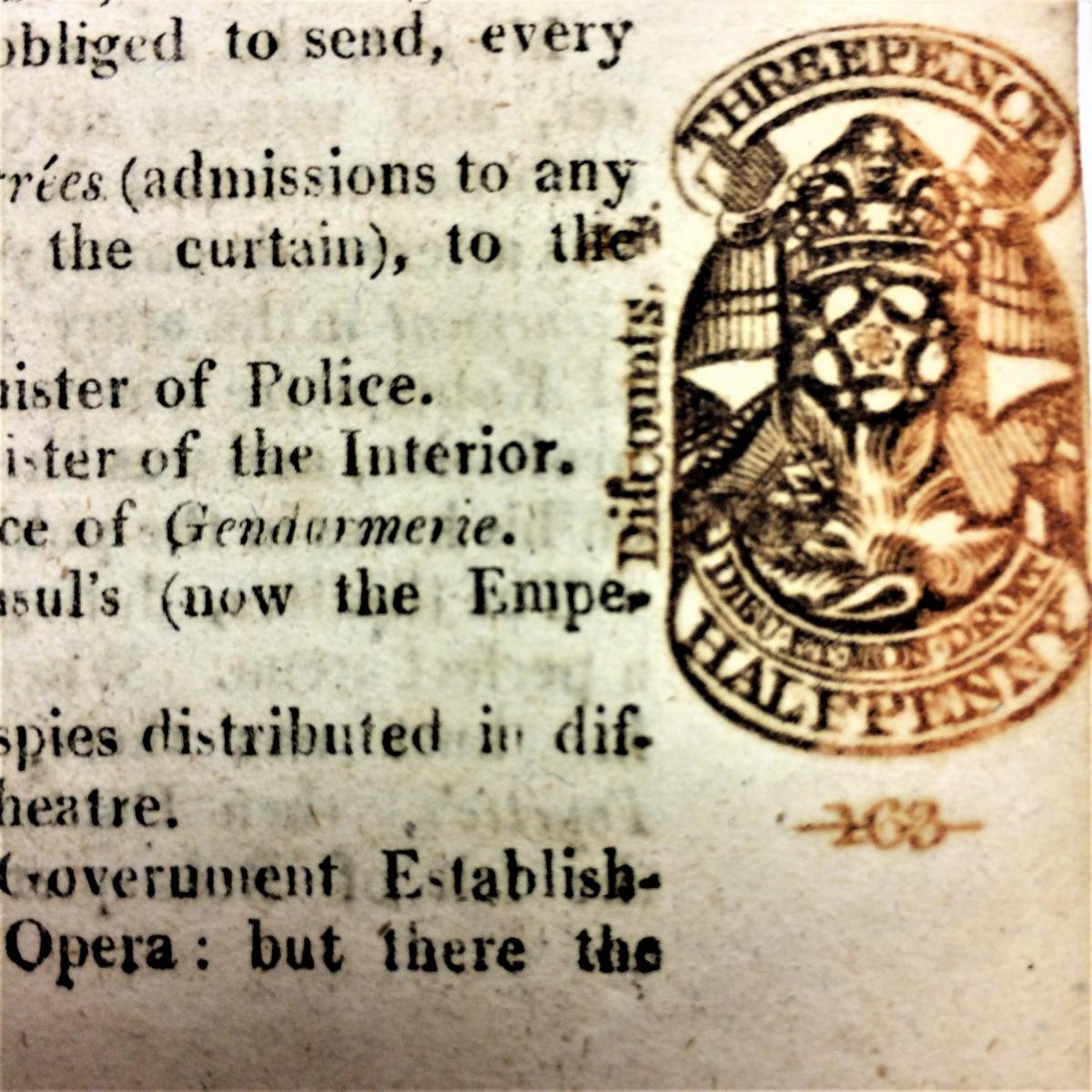As I was going through condition reporting The Anti-Gallican Monitor and Anti-Corsican Chronicle, a weekly newspaper published in London from 1811-1815, I noticed on every front page, in the lower right corner, an inked handstamp. The stamp has a lovely decoration in the middle, what looks to be Scottish thistle, possibly a rose, and a small crown above.
The stamp reads "Threepence" across the top, "Dieu Et Mon Droit" below the decorative flourish, and "Halfpenny" along the bottom. Thanks to Carter Litchfield, Hagley has a lovely collection of tax stamps so I was familiar with them and figured this handstamp came from that collection. But my interest was piqued, so I did some research.
The first newspaper tax was established in 1712 and imposed a halfpenny tax on papers the size of half a sheet or less, and a penny on papers that ranged from half a sheet to a single sheet (the Anti-Gallican is a single sheet size, folded in quarto). In 1802 the tax was increased to threepence and then to fourpence in 1815. Newspaper tax caused enough outrage that it was abolished by 1855.
 Referred to as a “Tax on Knowledge,” the tax made it difficult for the working class to afford newspapers, but this is precisely what the government intended. Newspapers at the time were often filled with anti-government and anti-religion sentiment.
Referred to as a “Tax on Knowledge,” the tax made it difficult for the working class to afford newspapers, but this is precisely what the government intended. Newspapers at the time were often filled with anti-government and anti-religion sentiment.
The tax was an attempt to quell hostility toward church and state, but was seen as suppressing free speech, and particularly the views of the lower class.
The Anti-Gallican Monitor was a vehicle for publisher Lewis Goldsmith to attack Napoleon Bonaparte who was in the midst of his Napoleonic Wars. Anti-French views, denunciations of the French Revolution and English sympathizers were also espoused weekly.
Lewis had such contempt for Napoleon that he called for a price to be put on Bonaparte’s head. This earned him the label of "agitator" by the British government.
After Louis XVIII was re-established on the French throne in 1815, which Lewis had voraciously advocated for in his paper, the Anti-Gallican was re-named the British Monitor. It was published until 1825.
Lewis’ support had not gone unnoticed by the returned king. Louis granted Lewis a pension for life. Lewis resettled in Paris where he died in 1846.
Sharon Fickeissen is the Conservation Technician at Hagley Museum and Library.
